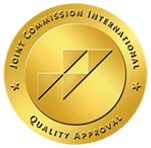2006 U.S. drug legislation moved ephedrine and pseudoephedrine behind pharmacy counters to fight the methamphetamine epidemic. Then, the opioid epidemic took the spotlight. While Americans were focusing on opioids, the drug cartel was busy creating a new type of methamphetamine.
This new methamphetamine, known as p2p drugs or super meth, has created a spike in meth use. But what is super meth, and what makes it different from other forms of meth? Keep reading to discover the answers to this and the danger of P2P drugs. If you or a loved one are looking for meth addiction treatment in WA, please give us a call today.
What is Super Meth?
Super meth or p2p drugs is a variant of standard meth. The drug cartel uses a different precursor in producing this drug. They manufacture super meth with phenyl-2-propanone. The result is a more potent, more affordable, and more plentiful version of meth.
The Difference Between Super Meth and Meth
 Besides using phenyl-2-propanone instead of ephedrine or pseudoephedrine, there are a few key differences between super meth and meth.
Besides using phenyl-2-propanone instead of ephedrine or pseudoephedrine, there are a few key differences between super meth and meth.
One difference is cost. Super meth is 71 percent less expensive. Another difference is the potency and purity. Super meth is up to 97 percent pure with the same potency.
According to the D.E.A., 91 percent of their meth samples are manufactured as p2p drugs. All of these factors combined make super meth more available, less expensive, and much more addictive.
The History Behind Methamphetamines and Now Super Meth
Amphetamines have a lengthy history of misuse that predates World War II, with allegations of soldiers on both sides using the drug to combat fatigue. Following the war, amphetamines gained popularity in the United States as doctors frequently prescribed them to address various health conditions, including at ADHD treatment centers.
Even today, amphetamines continue to be prescribed for conditions such as ADD and ADHD and less frequently for narcolepsy and weight loss. As the crackdown on legally prescribed amphetamines began, the production of methamphetamine saw a significant increase.
The enactment of the Comprehensive Drug Abuse Prevention and Control Act of 1970 restricted people’s access to amphetamines, inadvertently leading to the expansion of an illicit market for methamphetamine production.
When Did the Meth Epidemic Begin?
Informally the meth epidemic began in the 1970s after limiting doctors from prescribing amphetamines. The manufacturing and use of illegal methamphetamines started on the West Coast. By the 1990s, it reached the central and eastern parts of the country.
What Did Manufacturing Meth Look Like?
Methamphetamine, commonly referred to as “speed” or “glass (meth),” was initially manufactured in small, makeshift labs using cold medicine products containing ephedrine. For many years, meth produced from ephedrine was easily accessible throughout most of the United States. However, in the past decade, changes in the law compelled pharmacies to restrict the sale of ephedrine-containing products.
Over time, the Mexican government also prohibited ephedrine, leading drug traffickers to adapt and modify the method for producing methamphetamine.
What is P2P Meth?

Following the crackdown on ephedrine-based cold remedies, the landscape of methamphetamine production has undergone a transformation, giving rise to new chemical formulations such as P2P drugs. Instead of ephedrine, meth is now synthesized using a range of chemicals, including:
- Acetone
- Cyanide
- Lye
- Mercury
- Sulfuric acid
- Hydrochloric acid
- Nitrostyrene
- Racing fuel
Beyond altering the ingredients, P2P drugs also boast a higher concentration of the d-methamphetamine isomer. For reference, methamphetamine exists in two forms: d-methamphetamine and l-methamphetamine, both being methamphetamines but often found in different contexts. The d-isomer is typically found in prescription medications, whereas the l-isomer is commonly present in over-the-counter products. Street drugs, however, tend to contain both isomers, with a greater emphasis on the d-isomer due to its enhanced effects.
What Are the Effects of D-Isomer in P2P Drugs?
The d-isomer of meth induces a euphoric high, while the l-isomer primarily impacts the body. Consequently, p2p meth, with its significant levels of the d-isomer, elicits a distinct and highly intense high in its users.
Meth derived from ephedrine typically encourages users to stay awake and engage in social activities, often for extended periods, owing to its lower d-isomer content. In contrast, individuals who use p2p meth encounter markedly different effects, including severe mental disturbances, psychosis, a strong inclination toward isolation, and experiences of hallucinations or delusions.
The Unknown Dangers of Super Meth?
The producers of super meth often manufacture the drug in unsanitary conditions. Additionally, they often lack professional chemistry expertise. As a result, consumers frequently endure additional and substantial side effects. These street-level manufacturers prioritize profit and typically disregard delivering a high-quality product.
This emerging form of methamphetamine is considerably more dangerous, significantly heightening the risk of severe mental disorders and other detrimental mental health consequences for its users.
Super meth often contains contaminants like fentanyl. Individuals seeking help for their addiction have reported enduring a detox process that can extend for nearly six months. At Bayview Recovery, we also offer a fentanyl addiction treatment program in Washington for those dealing with an addiction to fentanyl.
Moreover, individuals who use p2p drugs are likely to experience a swift deterioration in their physical health, including the risk of liver failure, even after relatively brief periods of substance use.
What Are the Physical and Psychological Side Effects of Super Meth?
In addition to providing a more intense and prolonged high, super meth inflicts more severe physical and mental repercussions. These consequences include heightened blood pressure and respiratory rate, increased body temperature, and an elevated risk of heart attacks or strokes.
However, in contrast to earlier meth formulations, P2P meth’s reduced presence of l-methamphetamine eliminates the early physical indicators of overdose, such as an elevated heart rate. As a result, overdose rates are on the rise nationwide.
Both the enduring physical and mental side effects of super meth can be prolonged, sometimes even irreversible. Users not only endure strain on their organs and the potential for organ failure but may also struggle with paranoid episodes, psychosis, hallucinations (with frequent reports of the sensation of bugs crawling under the skin), and memory impairment.
Physical Side Effects of P2P Drugs?
- Speech is jumbled
- Blood pressure increases
- Respiratory rate increases
- Body temperature rises
- Insomnia
- Cardiovascular issues
- Convulsions and tremors
- Death
Psychological Effects
- Psychosis
- Violent paranoia
- Isolating
- Hallucinations
- Delusions
- Major memory loss
- Anxiety
- Aggression and violence
Are Super Meth and Crystal Meth the Same?
Crystal methamphetamine is a refined version of conventional meth. It boasts a minimum purity level of 80%. Uncut super meth and p2p drugs essentially form a new iteration of crystal meth, characterized by purity and potency levels that now exceed 90% in the majority of samples.
Adding to the challenge of increased potency is the cost-effective production method. It makes p2p drugs significantly more affordable than crystal meth.
What Are the Dangers of P2P Drugs?
Conventional meth was once viewed as a recreational “party” drug. It delivered euphoric and invigorating highs that typically lasted around 12 hours or less. In contrast, super meth induces a profoundly incapacitating high, rendering users immobile for 24 hours or longer.
Moreover, super meth presents heightened risks of organ damage, reduced cognitive function, and overdose, frequently resulting in fatalities. These adverse effects can be triggered with smaller doses compared to standard methamphetamine.
Why Is It Important to Continually Test Super Meth Users?
Given its highly addictive and life-threatening potency, the risk of overdose is alarmingly high for super meth users during relapses. Moreover, the brief window of metabolization (typically lasting no more than three days) means that meth use might go undetected by sporadic screening methods if appointments are missed or scheduled infrequently.
Frequent testing holds individuals accountable for potential drug use at all times. This constant oversight empowers case workers and judges to proactively prevent severe medical complications, mitigate further social and economic instability, and potentially save lives by averting relapses.
Recovery from Super Meth Goes Beyond Drug Testing
 Drug screening represents just one aspect of a multifaceted recovery journey. Individuals struggling with super meth addiction require a comprehensive approach encompassing counseling services, psychiatric support, and the strength of a sober community to sustain their sobriety.
Drug screening represents just one aspect of a multifaceted recovery journey. Individuals struggling with super meth addiction require a comprehensive approach encompassing counseling services, psychiatric support, and the strength of a sober community to sustain their sobriety.
The profound psychoactive effects of super meth often result in social isolation and psychosis. This makes a comprehensive recovery program to tackle these challenges necessary.
Bayview Recovery Can Help Get Your Life Back
Are you or a loved one struggling with an addiction to super meth or any other substances? At Bayview Recovery, our comprehensive treatment programs offer the tools needed to take your life back and achieve lifelong recovery.
Remember, addiction does not signify the end. Contact us today and find a brand new lease on life.

 Dr. Dave Cundiff, MD, MPH (Medical Reviewer)
Dr. Dave Cundiff, MD, MPH (Medical Reviewer)






